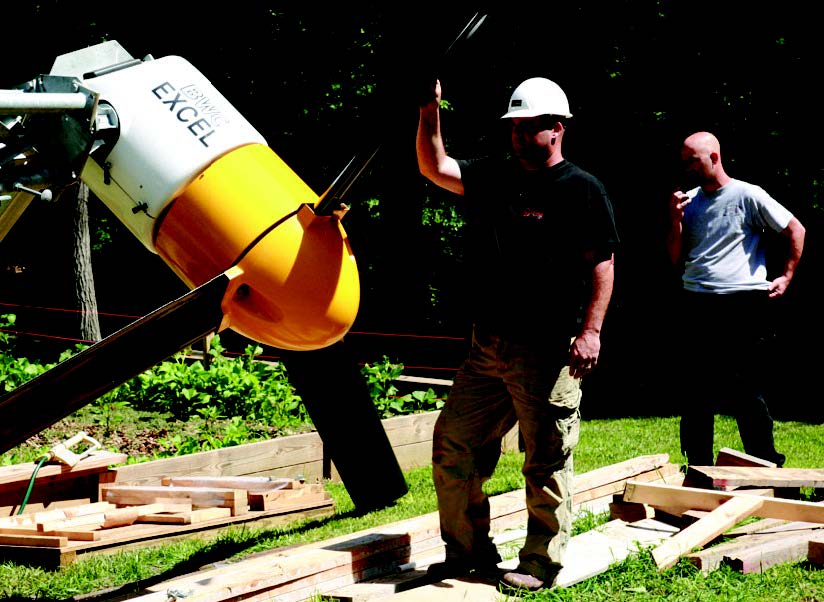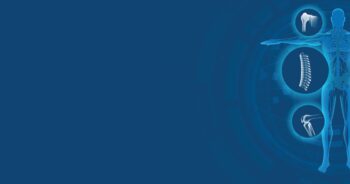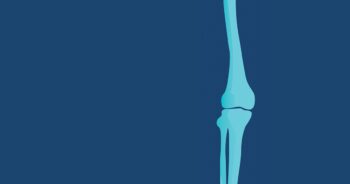
Spinal Symptoms Begin
Spinal Stenosis surgery was an ultimate diagnosis and treatment for Paul, but it didn’t begin there. Here’s Paul’s story, in his own words: The onset of my spinal symptoms included itching of my arms and the back of my neck, muscle weakness, stiffness, aching, lack of sleep, and constant pain in the back of my neck down to between my shoulder blades. I decided to address these symptoms with a surgeon who performed an anterior cervical fusion in October 2007. However, the surgery was unsuccessful and the physical pain returned.
Soon after surgery, I started my own business. This induced much anxiety, because although the pain was becoming unbearable, I couldn’t neglect work. The pain and anxiety had an effect on my family as well.
As a result, I was not myself physically, and to concentrate on anything else in life was getting harder. I found no relief in any position – standing, sitting, or lying down. Knowing that my quality of life was affected due to the daily battle with pain, I was forced to make an appointment with a specialist.
Looking for guidance? Go on our Patient Journey!
Spinal Stenosis Treatment & Recovery
A year after my initial surgery, I found Dr. Brian Subach at Virginia Spine Institute for a consultation. He recounts his examination and findings:
“Paul initially presented to me describing 80% neck pain and 20% symptoms in his arms, specifically left-sided neck achiness and right arm numbness. The constant pain in his neck radiated down toward the left shoulder and he also had numbness in his right forearm down to his right thumb. He had similar symptoms in 2007 involving the left arm, which resolved after an anterior cervical fusion was attempted at C3/C4, C4/C5, and C6/C7.
On examination, flexion forward of the cervical spine caused pain, although extension to thirty degrees caused no discomfort. Light touch sensation was normal in both upper and lower extremities and on neurological testing his reflexes were brisk, 3/4 in both the arms and legs.
There was a Hoffmann’s sign present bilaterally, indicating damage or compression of the spinal cord in the neck.
>>>>>>> A Back Pain Treatment that Worked: Mary Lou’s Story
Having a presumptive diagnosis of cervical degenerative arthritis with previous attempted surgery and recurrent neck pain, my concern was one of two possible diagnoses; there was either a failure of the fusion to heal properly or there was progression of disease to involve a previously normal level. He had x-rays done at our office which demonstrated failure of the bone grafts to heal in the disc spaces where the fusion had been attempted.
There was clearly plate fixation on the front of the spine, however, there was also a clear gap between the donor bone and the endplate confirming a pseudarthrosis, or false fusion. Essentially, instead of healing solid bone, scar tissue finds its way into the area and there is continued motion. The bending x-rays demonstrated that the area of the attempted fusion still moved.
His MRI scan demonstrated evidence of signal change or a white area in the substance of the spinal cord, which indicated compression of the spinal cord and damage. In this area, there was spinal stenosis, which was significant and needed to be addressed.”
Spinal Stenosis surgery would be necesaary. Previously, I had tried several different non-operative treatments including chiropractors, massage therapy, physical therapy, pain relievers, traction, and a previous surgery for this same issue. Dr. Subach shared his recommendations and the procedure we decided to pursue:
“I discussed with Paul the two problems that I saw. The first problem was the failure of the fusion to heal properly, which meant that he would need a revision operation from the front side of the neck.
My second concern was his forward flexed posture and persistent spinal stenosis which would require a decompression from the back of the neck. I discussed doing this in two phases: on day one, a posterior cervical laminoplasty to make sure the spinal cord had adequate room and on day two, plate removal followed by revision anterior cervical fusion, placing a single plate across the front of the spine.
On January 3, 2011, Paul underwent a posterior cervical decompression laminectomy and fusion. At the time of surgery, I had planned to do a laminoplasty procedure, which would have given the spinal cord additional room but kept the supporting ligaments.
During that attempted procedure, he developed an acute deterioration in his somatosensory-evoked potentials and motor-evoked potentials while he was on the table. That meant that my manipulation of his spinal cord was causing him to lose function in both his arms and legs.
Therefore, I decided to change the procedure from a laminoplasty to a decompression laminectomy, which would certainly be faster. Upon completion of the operation, he did move both his legs as well as the right arm. His left arm did not move initially but began moving shortly after starting the corticosteroid protocol for spinal cord damage. Paul made a reasonable recovery in both his legs and arms.
We had excellent decompression of the spinal cord, however, he still had the pseudarthrosis to deal with. After waiting nearly two months for him to recover, he was taken back to surgery on March 16, 2011 to undergo revision anterior cervical fusion. I removed the previous plates, chiseled out the failed bone grafts, and revised his fusion, restoring his normal posture, his normal alignment, and decompressing the spinal cord beautifully. He had no problems with this operation, from positioning to wake up and was moving his arms and legs.
Over the ensuing months, Paul obviously had discomfort, which gradually improved with physical therapy and time. His ability to use his arms and legs continued to improve, and by the time I last saw him in December 2012, he had absolutely no neck pain and had recovered normal function in his arms and legs.
He essentially required revision surgery for a difficult problem, became transiently paralyzed on the operating table, regained his function, underwent anterior cervical reconstruction, and is now pain-free!”
Paul’s Life Today
Since surgery to help my Spinal Stenosis, my life has changed drastically. I no longer need pain medicine on a daily basis; the itching and pain down my arms and back of my neck are gone. I now have more range of motion than even before surgery. I can do the physical labor necessary for my business without having to stop due to pain.
Additionally, sleeping through the night is now possible. I am able to walk and participate in recreation with my kids, like a game of football, riding dirt bikes, and my favorite past time, drag racing. The anxiety I felt before surgery due to not seeing any relief in sight is a thing of the past.
I would recommend to anyone going through similar issues with chronic pain to please consider a consultation with a specialist who looks at a patient as a whole, not just a number on a chart – taking into consideration your family, lifestyle, work, and recreation. You can get your life back.


